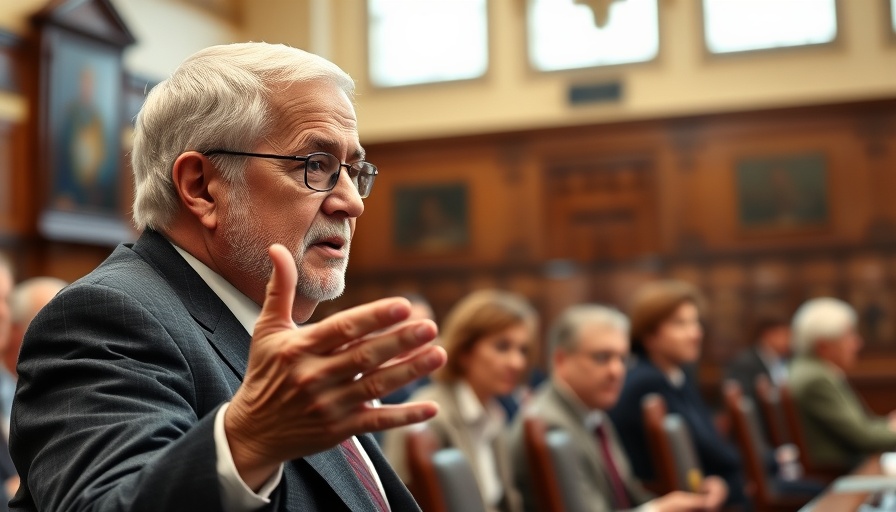
A Cautionary Tale: The U.S. Government's Investment Missteps
When discussing the federal government’s history of investments, it’s hard to ignore the examples that have not gone as planned, particularly when it comes to funding ventures that many deemed ill-fated. Recent commentary from Senator Bill Cassidy underscores this point by reflecting on what he calls a dismal track record of the U.S. government investing in what has been colloquially referred to as "dogs"—projects that are politically motivated but yield poor results. From an economic standpoint, such investments can divert precious resources from otherwise viable initiatives, leading to disillusionment among taxpayers.
In 'The U.S. Government Has A Bad History Of Investing In Dogs,' the discussion dives into the complexities of governmental investments and their impact on economic health, inspiring us to examine these points in greater detail.
Understanding the Risks of Government Investment
Investments driven by political expediency rather than sound economic principles can result in substantial waste. Examples abound, from government-backed loans to failing automakers to funding for renewable energy projects that didn’t deliver. Senator Cassidy's critique articulates a fear that these missteps could lead to more prudent ventures being overlooked due to a stigma resulting from previous failures. The fundamental issue lies in the government's ability to accurately assess the potential success of investments, which Cassidy emphasizes as crucial for responsible fiscal stewardship.
The Current Landscape: Potential Solutions for Employee Ownership
As the conversation unfolded, an interesting prospect emerged regarding Employee Stock Ownership Plans (ESOPs), which can empower employees by giving them a stake in the companies for which they work. Unlike government ventures, this strategy promotes sustainability and shared success, echoing a more grassroots approach to business funding and success. When organizations face the prospect of financial shortfalls or exits from specific markets, the flexibility and employee-centered models like ESOPs can preserve jobs and promote economic stability in local communities.
Capital Access: Funding Challenges for Small Businesses
The dialogue highlighted significant barriers that small businesses face when trying to secure funding through traditional sources such as the Small Business Administration (SBA). Cassidy pointed out that the SBA hasn’t been optimal for structuring ESOPs, demonstrating a need for innovative financing solutions tailored to the dynamics of employee ownership. The quest for better capital solutions presents an opportunity for lawmakers to reevaluate existing frameworks and introduce more responsive legislation that can benefit local economies and allow businesses to thrive.
The Role of Policy in Shaping Business Outcomes
At the heart of this discourse is the suggestion that sound policy can lead to better investment outcomes. When government enters the investment arena, it should be through a lens of judicious decision-making that prioritizes economic viability over political gains. This approach can inspire not only more confidence in government initiatives but also wider acceptance of programs designed to foster employee ownership and local job creation. The discussions surrounding the Kane Marshall bill are pivotal in assessing how to potentially bridge the funding gap that exists for ESOP transactions.
Lessons Learned from Previous Investments
Cassidy's remarks serve as a clarion call for revisiting the lessons learned from historical governmental investments that have backfired. It begs the question: how can the government pivot towards strategies that yield better returns on investment for taxpayers and local communities? Policymakers are tasked with ensuring that future investments are both robust and inclusive, particularly in areas like employee ownership, which align interests between workers and business owners.
As we navigate these discussions, it becomes increasingly clear that a reluctant yet necessary re-evaluation of how the government approaches investments—both in businesses and community initiatives—could mitigate risk and foster innovation. With the correct frameworks and willingness to learn from past experiences, it’s possible to create a more sustainable and economically resilient future.
In summary, the potential for transforming the landscape of employee ownership through well-structured investment initiatives is not just about mitigating losses from past failures but also about capitalizing on successes that could redefine community and economic engagement in the United States.
 Add Element
Add Element  Add Row
Add Row 



Write A Comment